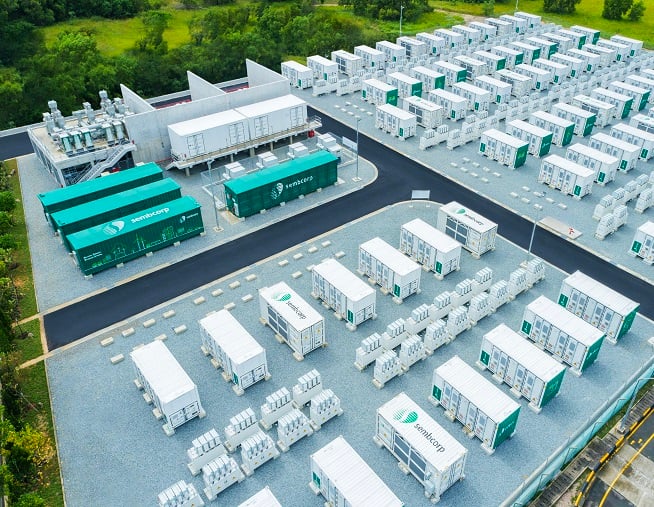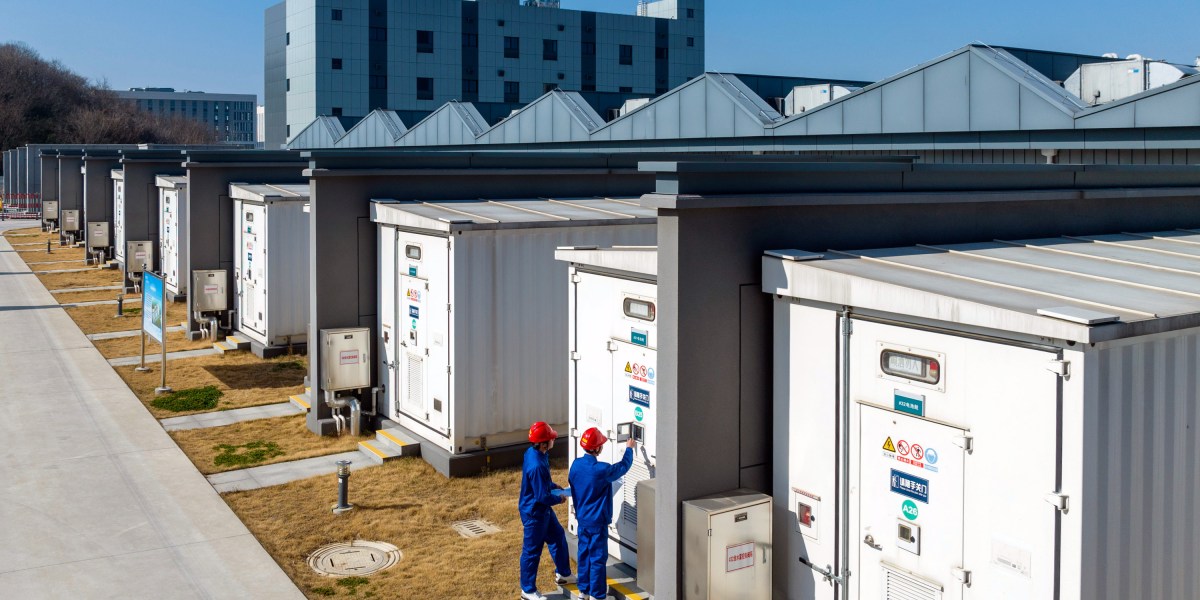- Climate starts with SEA
- Posts
- 🔋 [#33] Energy Storage: Charging Ahead
🔋 [#33] Energy Storage: Charging Ahead
🦁 EVs drive the Li-ion's share of battery demand
Hello! Halo! Kumusta! Xin chào! สวัสดี! မင်္ဂလာပါ! ជំរាបសួរ! ສະບາຍດີ!
👮🏻 Did you hear about the crime that the energy storage device committed?
🔋 It was charged with battery!

Image generated by authors using ChatGPT-4o
😅 OK, enough bad dad jokes/puns about energy storage! In this issue, we’ll be exploring the importance of batteries (no, not that battery) within the context of our energy transition series in a co-authorship and interview with Bryse Gaboury, the Chief Revenue Officer of StB Giga.
🔌 Without further ado, let’s charge ahead!
🤔 What’s the deal with energy storage?
⚖️ One of the main objectives in any energy system is maintaining a delicate balance between demand and supply of energy. In fossil fuel based energy systems 🛢️, ensuring that sufficient energy is being generated to meet the needs of the energy grid ⚡ would effectively mean scaling up power plants 🏭 and the fuel feedstocks accordingly, with lower emphasis on storage; this is analogous to vehicles 🚗 with internal combustion engines: more energy just meant adding more fuel to the tank ⛽.
☀️ However, as we discussed in our solar energy issue last week, renewable energy sources such as solar and wind are growing as a proportion of our energy supply both in Southeast Asia (SEA) and also more generally around the world. Because of the intermittency of these energy sources, it makes energy storage all the more important as a consequence. This is why Battery Energy Storage Systems (BESS), which store excess renewable energy until its needed, are so critical to our energy transition.
As of 2022, the global installed BESS capacity has reached 45 gigawatts (GW) and is expected to increase to 500 GW by 2030
📈 In SEA, we’re already seeing some of these industrial scale renewable energy projects integrated with BESS. For instance, in the Philippines, such a facility was constructed in 2021 with a 40 megawatt (MW) capacity (Saur Energy, 2022). Moreover, Singapore launched SEA’s largest BESS facility last year with a 200MW/285MWh capacity, surpassing the country’s target of 200MWh of energy storage by 2025 (Energy Storage News, 2023). However, with ASEAN’s target of 23% renewable energy in Total Primary Energy Supply (TPES), more certainly needs to be done (Energy Tracker, 2023). Globally, battery storage capacity is expanding rapidly, with China contributing over half of all new capacity added last year…
🏎️ This growth in BESS demand due to the disproportionate increase in energy sourced from renewables is analogous to the rising demand in energy storage that we’re seeing driven by the in the electric vehicle (EV) space. As we mentioned in our EV issue, EVs continue to grow as a proportion of our vehicle sales vis-a-vis their internal combustion engine siblings, which is having an outsized impact on our demand for energy storage.
📊 As you can see from the chart above, by 2032 EVs are expected to drive the lion’s share of battery demand at nearly 90% (Wood Mackenzie, 2023)!
🛠️ So what are these batteries made of and how do they work?
4️⃣ Well, these electrochemical battery cells consist primarily of 4 components to facilitate the chemical reaction that involves removing electronics from one material and adding electrons to another (MIT) :
➕ Cathode: the “positive” end of a battery. A common type of cathode material is lithium iron phosphate (LFP) but other technologies also include nickel manganese cobalt (NMC).
➖ Anode: the “negative” end of a battery that. Materials are commonly composed of silicon compounds and alloys (Applied Surface Science Advances, 2022)
🚰 Electrolyte: a fluid or other material that conducts ions but not electrons in order to facilitate the chemical reaction between the cathode and anode accordingly.
🧱 Separator: otherwise known as a membrane, also allows for ions to pass through but not electrons.
Which are then manufactured into battery cells, modules, cabinets, and containers…
🔋 The vast majority of these are Lithium Ion batteries (Li-ion), and they work by combining the aforementioned elements into a system of chemical-electrical energy exchange as is illustrated quite well below…
🌏 Global supply chain and Southeast Asia’s role
⛓️ The supply chain for this is dominated by China; the country commands over 80% of global manufacturing capacity in 11 clean technology segments, including battery cells, cathodes, anodes, electrodes, separators, etc.
⛏️ While China dominates from a manufacturing perspective, SEA does have an important role to play in supplying critical minerals like nickel and cobalt; though Indonesian politicians hope to change this economic dynamic with a policy of downstreaming 🔽.
🚀 StB Giga—an Australian-Chinese JV with operations in the Philippines—has been established to meet the skyrocketing demand of LFP batteries for both stationary and mobile uses in SEA. StB is also part of the push for diversifying the clean energy supply chain.
⚡ Other energy storage technologies
Beyond Li-ion batteries, there are other interesting energy storage technologies that are showing promise, such as…
🌊 Pumped Hydro Energy Storage (PHES)
💦 PHES effectively leverages the same principles as hydroelectric power—which essentially uses the flow of water to turn a turbine and generate electricity—but does so in a battery mechanism as a way to store water during low demand periods and release it during higher demand periods.
🗣️ This was in fact discussed at length during a recent ASEAN & Australia workshop. Notably, Australia has over 120 hydroelectric stations operating across the country, with 3 PHES systems connected to the national electricity grid so was well-positioned to provide guidance to its ASEAN neighbors in this context (ARENA, 2024).
♨️ Thermal Energy Storage
A whopping 20% of global energy goes to producing heat used in industry
⌛ As we had featured in our climate venture capital issue: Alternō, a Vietnamese startup that our friends at the Radical Fund recently invested in, are pioneering a sand-based thermal energy storage for agricultural, industrial and residential use cases.

🏭 Rondo Energy, a SF Bay Area startup, is using another type of material called a refractory brick to store thermal energy and is already capable of producing 2.4 GWh of its heat batteries per year at a factory right here in SEA—in Thailand, specifically (Canary Media, 2023)
⚙️ Other technologies
🌠 Other emerging energy storage innovations include gravity energy storage, which is being pioneered by Energy Vault with their G-VAULT™️ product; it uses a similar concept by using the power of gravity to store energy, albeit without the water component!
💨 Also, Compressed Air Energy Storage, which uses high pressure air—such as the type found in your car tires—to store and then release energy.
📚 Want to learn more about this topic?
“Batteries and Secure Energy Transitions” from IEA
“Global lithium-ion battery supply and demand update Q3 2023” from Wood Mackenzie
“Southeast Asia’s emerging energy storage opportunities” by Andy Colthorpe in Energy Storage News
“Market attractiveness analysis of battery energy storage systems in Indonesia, Malaysia, the Philippines, Thailand, and Vietnam” by Yeojin Yoo & Yoonhee Ha in Renewable and Sustainable Energy Reviews
🗞️ Recent News
🎙️ Interview with Bryse of StB Giga

…These shifts will have massive impacts on carbon emission reduction, cost reduction for drivers, and urban air quality across the region, and batteries will be the driver for this next phase of decarbonized energy development.
💡 Why were you initially inspired to work in the battery industry?
🌟 For years, I have been captivated by the transformative potential of the battery industry, particularly the new opportunities it opens up with the reduction in the cost of energy storage.
🏍️ On the small, decentralized end of the spectrum, a specific example is here in Southeast Asia. There are hundreds of millions of motorbikes on the road throughout Asia. We are close to the tipping point when the price of electric two-wheel vehicles will dip below the internal combustion engine (ICE), driven by the declining cost of the batteries.
🔺 At the larger, centralized end of the spectrum, adding utility-scale, grid-tied batteries will be absolutely necessary to reach the levels of renewable energy needed to meet global decarbonization targets.
✅ These shifts will have massive impacts on carbon emission reduction, cost reduction for drivers, and urban air quality across the region, and batteries will be the driver for this next phase of decarbonized energy development.
🛠️ How exactly is StB Giga Factory tackling energy storage in Southeast Asia?
⚡️ The StB Giga Factory is a new joint venture focused on meeting the rapidly growing demand of energy storage by manufacturing Lithium Iron Phosphate (LFP) batteries for residential, industrial, and utility-scale Battery Energy Storage Systems (BESS) along with Electric Vehicle (EV) applications. We are the first LFP manufacturer in the Philippines and one of the first here in Southeast Asia.
😲 What is a surprising fact about energy storage?
💸 Misconception: Batteries are too expensive!
☀️ The perception of costs lags the reality, often for years. In the early days of solar, projects required subsidies to make them financially viable, but solar prices continued to drop (80% since 2010), and now solar is one of the cheapest forms of energy on the planet. But people still associate them with subsidies.
🔋 The same is happening for batteries now. The prices of battery cells are projected to fall by 50% this year by two of the largest global manufacturers! The inclusion of batteries in more and more projects will make financial sense as prices continue to drop.
🎬 How can readers take action to support StB Giga Factory?
👋 We are a new JV with a startup culture and rapidly scaling the team. If you are interested in joining the team, please reach out to our HR team: [email protected]
🤝 Or, if you’re interested in buying batteries or setting up a distribution partnership with us, you can reach out to the Sales team at: [email protected]
🦸🏻 What do you do when you’re not saving the world?
First of all☝️(finger-raised emoji), I’m not saving the world.
🥳 Outside of work, I spend a lot of time with my family👨👩👧👧. We have two young daughters, so we like swimming🏊🏼, hanging out with friends🍻, and traveling✈️. I grew up in Colorado and try to make it back there to go snowboarding🏂 in the winter when I can (not easy here in SE Asia).
🗓️ Upcoming Event
📢 Exciting announcement: our very own co-founder, Massimiliano, will be speaking about climate finance at an event hosted by our friends, Scale Climate Action, in Bali on June 4th. He will also be speaking alongside our previous co-author on the nature-based solutions issue, Matt of Terratai.
📩 Please do register and came through if you’re around!
⏭️ Next week, we’ll be continuing our energy transition series with the important yet underappreciated topic of energy efficiency in a co-authorship with one of our friends and founder of an Indonesia-based startup!
❓ Did you enjoy this week’s issue? If yes, please do forward to your friends who would enjoy the read as well.
📧 Also, feel free to let us know what you thought by giving us feedback at [email protected].
🌊 SEA you next week!
Karina & Massimiliano












